A perspective on Japan's diminishing research output
Global science
Science is global and growing at an immense pace. This series provides an overview of the status of science and research around the world, in terms of R&D expenditure, citation metrics, collaboration, and internationalization.

In the previous post, Japan's research landscape and the need for internationalization, I shared a few facts about where Japan stands with respect to R&D expenditure and GERD and mentioned the fact that Japan's high investment in research is not directly proportional to its research output. Here I will delve into the factors that are causing a decline in Japan's research output and how the situation can be remedied.
Why is Japan’s research output diminishing?
1. Japan’s shrinking and ageing population
The simplest explanation that first comes to mind is the fact that Japan’s population is shrinking and ageing, which directly leads to a steep decrease in the number of young researchers. This in turn leads to deterioration in the quality of research Japan can produce and in its innovation power.
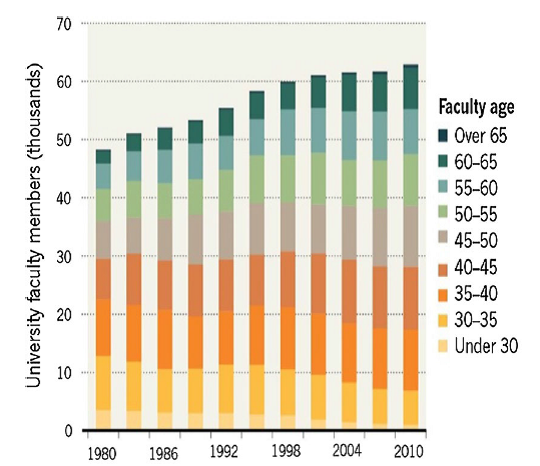
[Figure 1] [Despite a growth in the number of university faculty members in Japan, there are fewer opportunities for young researchers.]
Source: A. Arimoto, Higher Education 2015
2. Lack of international collaboration
Japan lags behind other advanced countries when it comes to the internationalization of its academia and research landscape. Let us compare some numbers. In the USA, 33% of the papers produced were co-authored, compared to almost zero in 1981. The UK also reports that 52% of its published papers in 2012 had international authors, a phenomenal rise compared to 15% in 1981. In comparison, only 25% of the almost 775,000 papers published by Japan between 2004 and 2013 were internationally authored. Three-quarters of the papers produced by Japan were by domestic authors, a figure that remains static. This lack of international collaboration could be a limiting factor for Japanese universities’ international performance (Source: OECD STI Scoreboard 2013).
3. Focus on domestic publications
The current academic and research system in Japan encourages Japanese universities to stay focused on research produced for the domestic market. This restricts international networking and keeps English-language publications, which command an international audience, on the periphery.
4. Lack of guidance
Japanese researchers, especially mid-level researchers, lack relevant guidance regarding potential collaboration with international authors as well as international funding for universities. There is also substantial scope for improvement in the coordination of Japanese researchers both within and outside Japan. Recent initiatives such as the appointment of University Research Administrators (URA) within the universities selected for the Ministry of Education, Culture, Sports, Science and Technology’s (MEXT’s) “Super Global Universities” initiative have yielded positive results, particularly thanks to efforts to integrate these institutions. However, the need for coordination and support is still strong for researchers, who, especially in Japan, are already overloaded with administrative work.
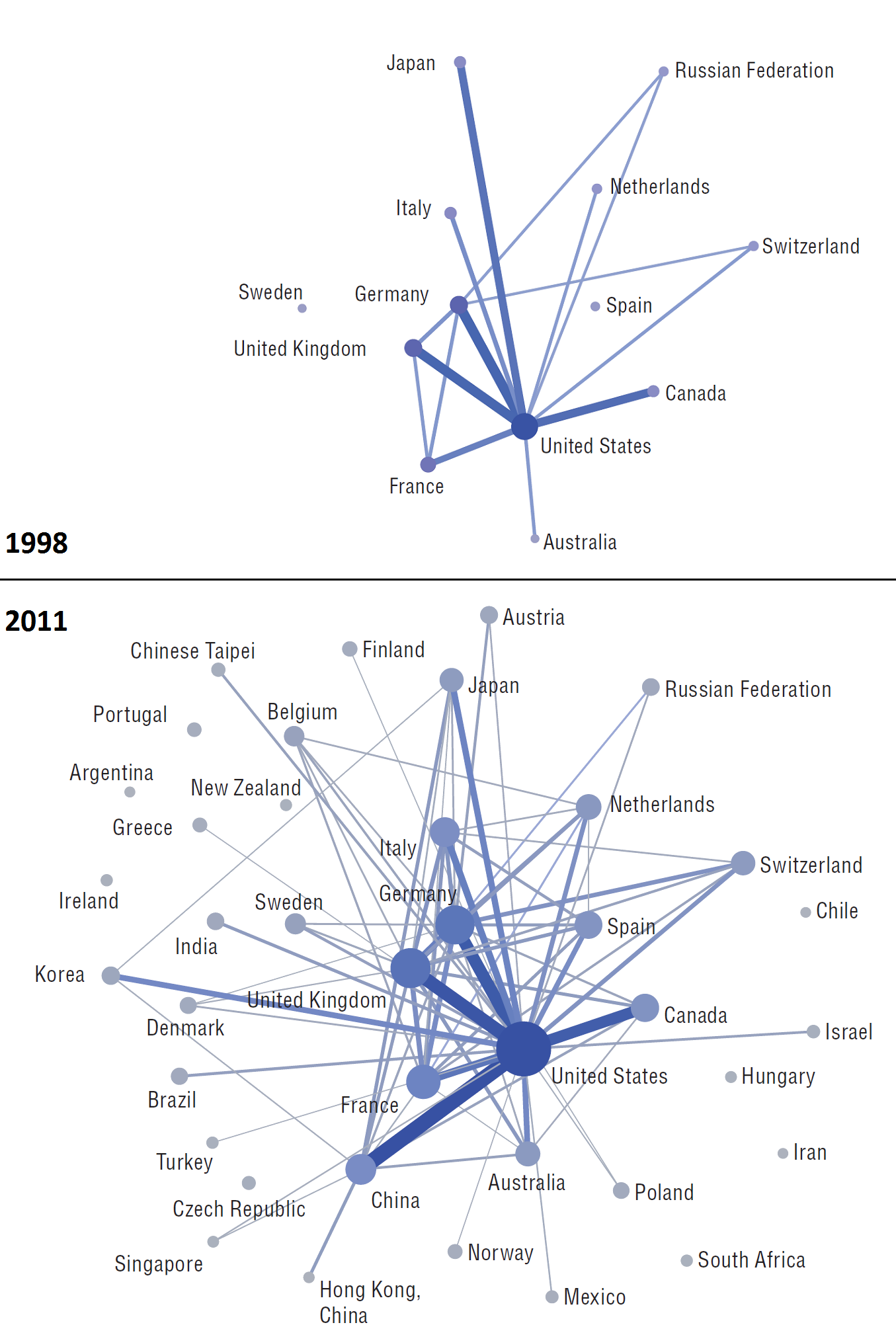
[Figure 2] [International collaboration networks in science, in 1998 and 2011. These charts include countries with a minimum of 10,000 publications that resulted from international cooperation. Each bubble represents a country’s production in terms of number of internationally co-authored papers. The relative position and width of the links represent the strength of their collaboration. While the number of internationally co-authored papers in the USA and European countries (particularly the UK, Germany, and France) increased drastically between 1998 and 2011, Japan’s progress in this regard is evidently much slower.]
Source: OECD STI Scoreboard 2013
5. Other problems with Japan’s research system
In a recent paper, “Declining symptom of academic productivity in the Japanese research university sector”, Akira Arimoto explains that the problems in Japan are more deeply rooted. He says that the Japanese university research sector is showing symptoms of declining academic productivity. According to Arimoto, some of the reasons for this are as follows:
- Lack of a market mechanism (absence of competition between national universities who get fixed funding from the government mainly based on the size of their staff and student population)
- Traditional hierarchical structure of Japanese universities
- Institutional inbreeding and limited mobility associated with a career crisis among academics under 35 years of age (due to an ageing Japanese society)
However, according to Arimoto, one of the most important problems might be a “very slow response to the rapidly changing international arena.”
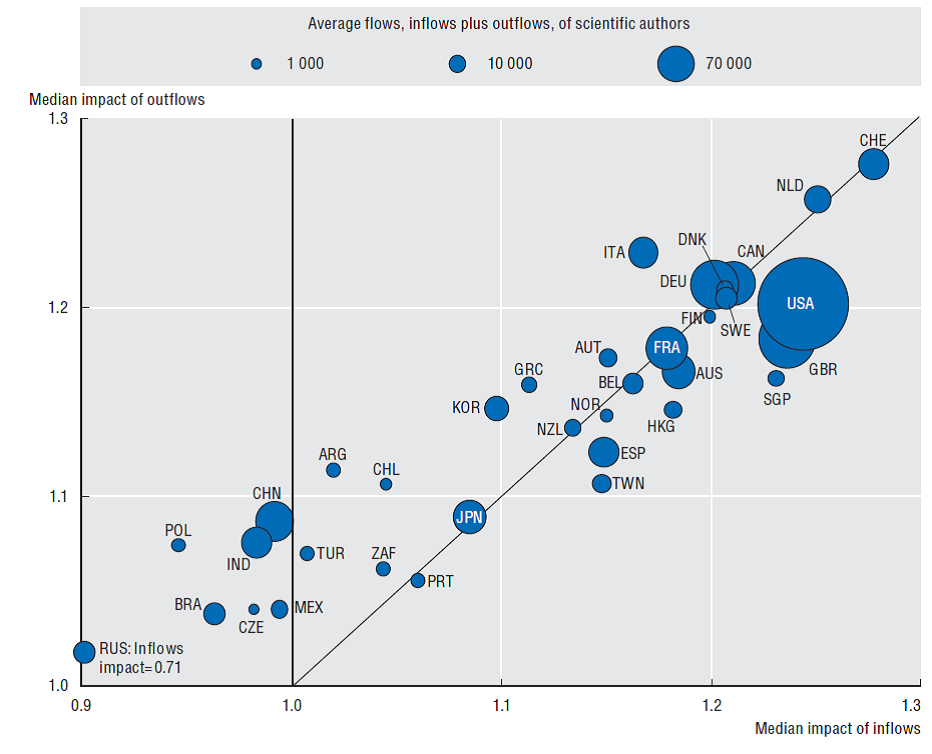
[Figure 3] [The number and impact of internationally mobile scientists, from 1996 to 2011. It is clear that Japan records relatively low in- and out-flowing researcher numbers over the period, particularly if we take into account the fact that Japan is a world leader in ratio of researchers in the active population. This suggests that Japan is probably unable to attract foreign researchers in large numbers, and is also unable to send its researchers abroad. Furthermore, the average impact of those flows is much lower than, for example, the impact in European countries, although still higher than the average impact of non-mobile researchers. This shows that there is a margin of progress in Japan towards a more impactful, internationalized research landscape, though the rate of progress is not optimal.]
Source: OECD STI Scoreboard 2013
Why internationalization matters
Today, intense competition to conduct novel path-breaking research has led researchers to step outside their lab and consider collaborative research in order to stay ahead of the game. Strides in digitization have also enabled them to coordinate the authoring and publication process smoothly. But what makes internationalization so important today?
1. Higher citation rates
Papers produced collaboratively across countries achieve higher citation rates and impact on a global scale. For example, data shows that there is a 50% increase in citations of papers with authors from more than one country.
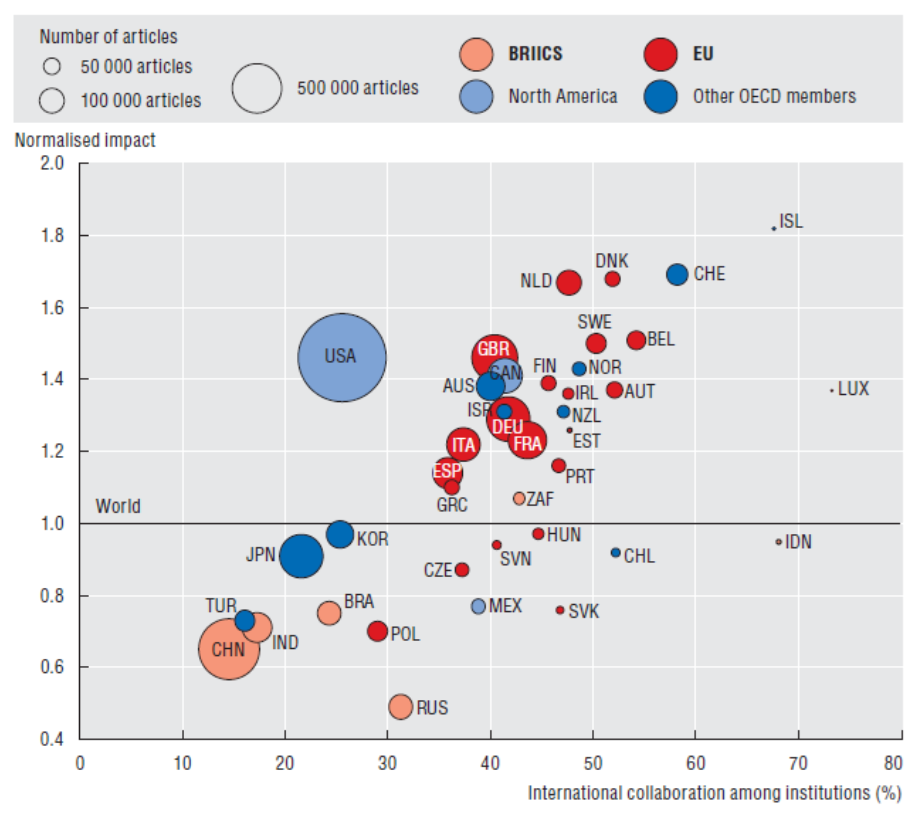
[Figure 4] [The impact of scientific production and the extent of international scientific collaboration, 2003-11; whole counts of internationally co-authored documents. The countries with the best average publication impact are also those very active in international cooperation; while those with low cooperation ratio fall below the world average, as does Japan.]
Source: OECD STI Scoreboard 2013
2. Boost to the impact factor
A comparison of publications produced at the domestic and international levels reveals that impact factor is clearly boosted by international co-authorship or even by simply having a team comprising researchers from diverse countries. Figures 4 and 5 present an interesting comparison of publication impact in the case of domestic and international authorship.
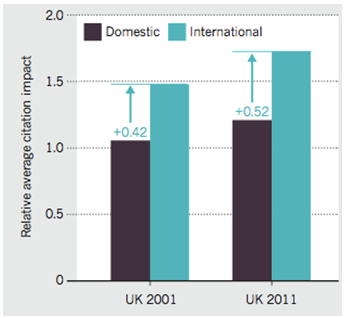
[Figure 5] [Comparison of impact factors of publications made in a domestic and international context in the UK, in 2001 and 2011. In both cases, impact is improved by approximately 50% for papers including authors from research teams abroad.]
Source: Adams, J., (2013), Nature, Vol. 497, pp. 557-560.
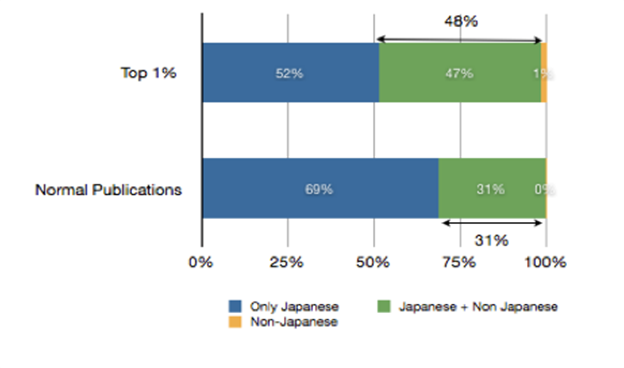
[Figure 6] [Comparison of team composition in publications made by Japan-based research teams. In blue, teams with no foreign scientists at all; in green, teams comprising at least one foreign scientist; in yellow, teams composed only of foreign scientists based in Japan. We see a pattern here: 50% of papers receiving the most citations (top 1%) were produced by teams including foreign researchers, while for normal papers that proportion falls to 30%.]
Source: S. Nagaoka, NISTEP Research Material 191: “Knowledge Creation Process in Science: Basic findings from a large-scale survey of researchers in Japan”, 2010.
This shows that not only international cooperation (producing papers with foreign research teams and institutions) but also researcher mobility and the capacity to attract world-level researchers have the potential to improve Japan’s research landscape and to help the country regain its strength in the today’s globalized research and development context. Japan should actively push its efforts toward internationalization through more international cooperation and mobility.
Published on: Jun 24, 2015
Comments
You're looking to give wings to your academic career and publication journey. We like that!
Why don't we give you complete access! Create a free account and get unlimited access to all resources & a vibrant researcher community.






























